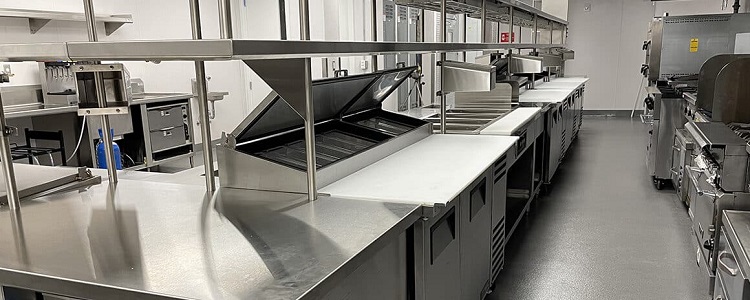Stainless Steel Fabricators: Crafting Excellence in Metal
In the grand tapestry of industrial craftsmanship, stainless steel fabricators stand as master artisans, sculpting the sturdy yet elegant material into a myriad of functional and aesthetic marvels. With precision tools, technical prowess, and an eye for detail, these craftsmen breathe life into stainless steel, transforming it from raw material into works of enduring beauty and utility. In this exploration, we unveil the world of stainless steel fabricators, shedding light on their craft, skills, and the diverse applications of their work.
Table of Contents
The Art of Stainless Steel Fabrication
Stainless steel fabrication is a multifaceted art that combines engineering principles with creative ingenuity. Fabricators harness the inherent properties of stainless steel—its strength, corrosion resistance, and lustrous finish—to craft a wide range of products, from architectural features to industrial components. Whether shaping sleek handrails for a modern building or precision parts for a cutting-edge machine, stainless steel fabricators infuse each project with skill and dedication.
Skills and Expertise
Behind every stainless steel fabrication project lies a wealth of skills and expertise honed through years of training and experience. Fabricators must possess a deep understanding of metalworking techniques, including cutting, bending, welding, and polishing. They also need proficiency in reading technical drawings and blueprints to translate design concepts into tangible products. Attention to detail, problem-solving ability, and a commitment to quality are also essential traits that distinguish top-tier fabricators.
Applications Across Industries
Stainless steel fabrication finds applications across a diverse array of industries, each with its own unique requirements and challenges:
Architecture and Construction: In architecture, stainless steel is celebrated for its aesthetic appeal and durability. Fabricators craft bespoke features such as balustrades, cladding, and sculptures that adorn buildings and public spaces, adding a touch of sophistication to urban landscapes.
Manufacturing and Engineering: In the realm of manufacturing and engineering, stainless steel fabrication plays a crucial role in producing components for machinery, equipment, and infrastructure. From precision parts for automotive engines to complex assemblies for aerospace systems, fabricators contribute to the advancement of technology and innovation.
Food and Beverage: Stainless steel’s hygienic properties make it an ideal material for food processing equipment, storage tanks, and kitchen fixtures. Fabricators ensure that these components meet strict sanitary standards while withstanding the rigors of food production environments.
Innovation and Sustainability
As technology evolves and environmental concerns come to the forefront, stainless steel fabricators embrace innovation and sustainability in their practices. Advanced manufacturing techniques, such as computer-aided design (CAD) and robotic automation, enhance efficiency and precision while reducing waste. Additionally, the use of recycled stainless steel and eco-friendly processes underscores fabricators’ commitment to environmental stewardship.
Conclusion: Shaping the Future of Metal Fabrication
In conclusion, stainless steel fabricators are the architects of modernity, shaping the built environment with their ingenuity and craftsmanship. From towering skyscrapers to intricate machinery, their work leaves an indelible mark on society, blending form and function in perfect harmony. As the demand for innovative solutions grows, stainless steel fabricators will continue to push the boundaries of their craft, driving progress and shaping the future of metal fabrication for generations to come.

